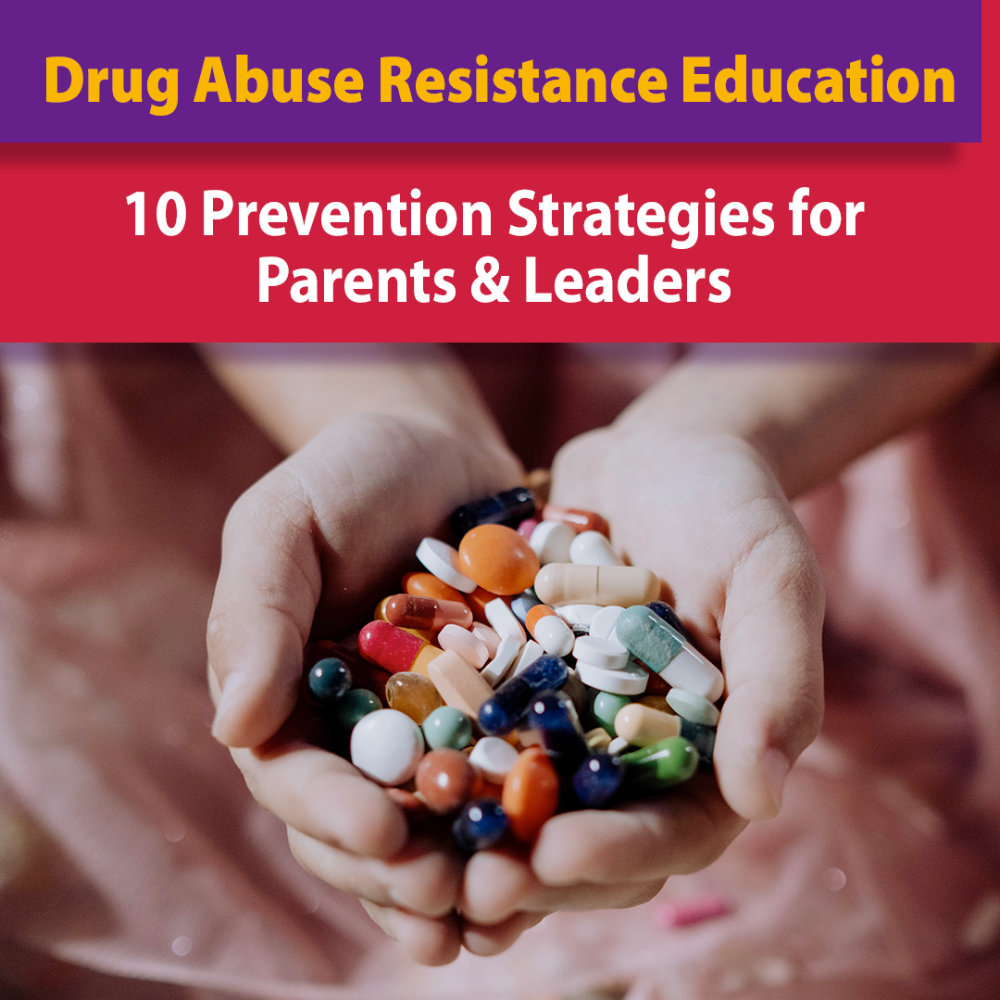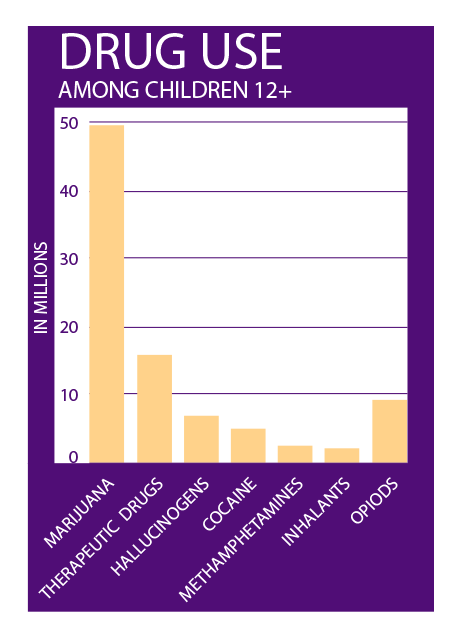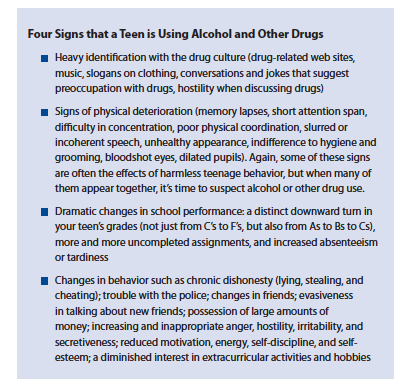
14 Apr Drug Abuse Resistance Education (D.A.R.E)
April 20, 2023 is National D.A.R.E. (Drug Abuse Resistance Education) Day
The D.A.R.E. mission: “Teaching students good decision-making skills to help them lead safe and healthy lives” D.A.R.E.’s vision: “A world in which students everywhere are empowered to respect others and choose to lead lives free from violence, substance use, and other dangerous behaviors.”
Children ages 12+ are using drugs such as hallucinogens, cocaine, methamphetamines, inhalants, heroin, and opioids in staggering numbers (see the chart below based on findings in 2020). Which is why it is so important for parents, teachers, and Leaders to speak to children about the dangers of drug abuse. Programs like D.A.R.E are an integral part of the solution, but the foundation must begin at home.

source: SAMHSA – The National Survey on Drug Use and Health: 2020
Stages of Drug Use
Drug use frequently progresses in four stages:
- Nearly 90% of all teens will try alcohol or marijuana. This is not to say that all of them suffer from low self-esteem and discouragement. The majority are motivated by simple curiosity. They have seen alcohol used by adults in their lives and have watched alcohol and drugs used in TV and movies for years (often, unfortunately, in an overly glamorized way). They wonder what it’s like. They see that “everyone tries it” and don’t want to be the only one who hasn’t.
- Social Use. About three-fourths of the teens who enter the experimentation phase move on to stage two—social use. These teens will use alcohol and other drugs at parties and other social settings, often mimicking behavior they see around them.
- In this third phase, teens will actively seek out places where drugs can be found. It is usually in this phase that addiction begins.
- Habitual Use. Teens who move into the habitual use phase are now driven primarily by the desire to use alcohol or other drugs, despite negative consequences or harmful effects. It has become an addiction, often both physical and psychological. The addict’s free will is overwhelmed, and reason takes a back seat to the need to feed the addiction. Fortunately, although a teen can go through all four stages in just a few months, the progression is not inevitable. Drug use can be stopped at any stage; however, the more involved young people are with drugs, the more difficult it is for them to stop. The best way to fight drug use, therefore, is to prevent it from starting in the first Educating teens about the harmful effects of drugs long before the teen years is ideal. If that isn’t possible, however, there is still a lot that you can do.
Ten Prevention Strategies for Parents & Leaders
source: Active Parenting of Teens the Parent’s Guide by Dr. Michael Popkin Popkin (copyright, 2009, Active Parenting Publishers.)
These strategies are critical to the prevention of not only drug abuse but alcohol and risky sexual activity. The more teens value themselves and the more courage that has been fostered in them the less tempting these risky behaviors become.
- Be a positive role model and teacher of values. Your teen is just now learning how to act like an adult. Because adult decisions and choices are new to him, he needs values and beliefs that he can base his actions on when he’s not sure what to do. As the most important person in your teen’s life, you can help him form these values by talking with him about issues and setting a good example yourself. If a parent or guardian uses illegal substances, a teen learns that it’s not important to abide by the law. If the parent can sneak, the teen concludes that she can sneak, too. On the other hand, if a parent/guardian shows they can resist the temptations in order to stay safe and healthy then a teen learns that saying “no” is sometimes necessary.
- Educate teens about the risks of drugs. Teens get a lot of information about drugs, sexuality and violence from other teens. Unfortunately, much of this “street” information is either inaccurate or one-sided because teens often emphasize the exciting aspects while downplaying or entirely ignoring the risks. To help balance this information bias, teens need to receive accurate and thorough information from other sources. Many schools have programs—like D.A.R.E.—to help inform teens about the real dangers involved with substance use. It is important for parents/guardians to be a part of a teen’s education on drugs. Rather than having one long talk, it’s more effective to have short but frequent discussions. This creates an open line of communication that can be extremely valuable as the teen encounters challenging situations. Topics for discussion should include:
specific drugs and their effects and risks
• The physical, psychological, and social effects of using any drug
• The consequence of breaking the law
• The increased chances of engaging in other risky behavior while under the influence of a drug (for example unprotected sex and other dangerous behavior).
For more pointers on talking with teens see Chapter 5 of the Active Parenting of Teens Parent’s Guide. - Filter OUT the negative and IN the positive influences. We talk a lot about the need to instill qualities of character in teens so that they will be able to make good decisions for themselves even under the thrall of peer pressure. The goal is not to censor every negative influence that your teen might experience, but to limit them while at the same time helping your teen put them into the proper perspective. Parents should aim to filter out events that are excessively dangerous in themselves or likely to promote beliefs and values that are harmful—particularly events that might encourage the use of tobacco, alcohol or other drugs, reckless sexuality, and violence. Ways to filter OUT Negative Influences:
- Become familiar with the media your teen uses—and agree on reasonable usage guidelines.
- Use rating systems and parental controls to help regulate media where applicable.
- Watch some of what your teen watches, and then discuss the messages presented.
- Learn to use parental controls and usage trackers provided by Internet providers and other methods of monitoring what your teen is accessing online.
- If practical, keep computers in public areas of the home where you can easily check to make sure only sites that you approve are being opened.
- Talk with the parents of your teen’s friends and encourage them to be vigilant also. Teens will often seek out homes where the restrictions are lax, so support each other.
- Set and enforce reasonable curfews.
- Know where your teen is and have him check in periodically.
- Get to know the teens and adults your teen spends time with. Talk with her about choosing friends and how friends influence each other. Subtly influence who your teen spends time with.
The reason you want to be “subtle” about who your teen spends time with is that teens are very sensitive about who they choose for friends. If you come on too strong, they may rebel and sneak together just to prove to themselves that they have control. The exception is if your teen’s friend is breaking the law. Then you have to risk the backlash and let your teen know that this friend (or group of friends) is off limits—at least until they get their act together. Here are a few subtle ways to influence who your teen hangs out with:
- Try to choose a neighborhood and school where other families are likely to share your values.
- Encourage your teen to join teams or participate in activities that will promote positive interaction.
- Talk together non-judgmentally about what makes for good friends.
Keep in mind that friends will play an important role in your teen’s life, and the quality of those friends could make a significant difference in the decisions your teen makes.
Social Media has an enormous influence on teens and it can be difficult to monitor but it’s important to find ways to limit their exposure in a way that is age-appropriate. Media and social media can also be a tool to open dialogue about family values and substance abuse.
Find positive influences, groups that share your values like faith-based groups or sports groups that can lead to positive, healthy friendships.
- Establish clear guidelines. Be clear that some behaviors—like drug abuse—are off-limits. Taking the time to agree on clear guidelines with a teen can pay off when the teen has to make a choice. The teen is prepared when the situation arises. This can be accomplished by having a problem-prevention talk:
Identify a potential problem like being offered drugs
• Share your thoughts and feelings about the problem and acknowledge the teen’s thoughts and feelings.
• Generate guidelines through brainstorming and negotiation (within limits that the parent/guardian can live with)
• Decide on logical consequences for violating the guidelines
• Follow up to ensure that guidelines were followed and enforce consequences if necessary - Monitor and supervise teen behavior. It is not possible nor wise to monitor every moment of a teen’s day but a teen should not have a large amount of unsupervised time. Suggest healthy and challenging activities. Know where your teen is and who they are with. Make a habit of asking your teen to tell you her plans before they go out. Be sure that they know how to contact you or another responsible adult if they need to. Establish a check-in rule that you both can live with. Set and enforce curfews. This should be agreed upon by both you and your teen. Sit down with your teen and have a Problem-Prevention Talk to set guidelines, continuing your discussion until you have agreed on weekend and weekday curfews and the consequences for missing them. Setting curfews is a good way to reduce conflicts and misunderstandings. Be awake when your teen comes home to make sure she is following the guidelines. If she does a good job of keeping to the agreed-upon limits, her responsibilities should earn her greater freedom. Likewise, if the guidelines are violated, then logical consequences can be used to reduce freedom.
- Work with other parents. Teens have a tremendous support group—their peers—to back up their behavior. They instinctively understand the principle of power in numbers. Parents can also utilize this principle by forming parent support groups in their community. These “parent networks,” as they are often called, can help parents agree on certain issues such as chaperoning, curfews, the need for regular communication among parents, and the unacceptability of teens using drugs.
- Provide healthy opportunities for challenge. Challenge is a basic goal of behavior for teens. The need to be challenged is a powerful drive, and yet many teens do not get enough opportunities to do so in positive ways. For too many teens, life is boring. So they resort to challenging themselves through the negative approach of thrill seeking just to feel a rush of adrenaline and a sense of adventure. Drugs, sex, and violence offer easy but dangerous ways to accomplish this goal. If it’s a physical challenge your teen wants, look into adrenaline-pumping activities like rock-climbing, mountain biking, or white-water rafting. Help your teen get involved with scouting or outdoor adventure programs such as Outward Bound. Organized sports offer excellent opportunities for healthy challenge, as well. School leagues, recreation department leagues, and youth groups such as the YMCA and Boys and Girls Clubs, offer plenty of opportunities for girls and boys to get physical in healthy ways. In addition to physical challenges, you can also encourage your teen to pursue challenges of a more intellectual kind: hobbies and other interests in which they challenge themselves to develop skills and knowledge. Possibilities include debate groups, chess clubs, working on the school newspaper, skill-building jobs, junior business clubs, community service work, dance groups, and playing a musical If your teen can find an interest that challenges them to stick with it and do their best, their confidence will grow and they will satisfy their desire for excitement in positive ways.
- Talk with teens about how to resist peer pressure. Peer pressure is more subtle and strong than most people realize. Imagine that four teens are sitting around talking, and one lights up a marijuana joint. Two of the others say, “Great!” and take a hit. The third hands it to your teen, expecting that they’ll want to smoke some, too. Let’s say they don’t want to, but they don’t want to look scared or inexperienced, either. They feel the pressure to do what the others are doing without anyone actually telling them to follow along. Will your teen say “no”? Go along with it anyway? Take a puff but not inhale? You can increase the chances of them saying “no” by coaching them ahead of time about how to handle such difficult situations in ways that don’t make them feel foolish.
- Identify and confront high-risk behavior. it takes some vigilance on the part of parents to make sure their teen is keeping his agreements and behaving safely. Is your teen going to parties where drugs or alcohol are present? To find out, you have to keep your eyes open—and your mind open, too. In other words, beware of convincing yourself so well that your teen “would never do that,” you don’t recognize the signs when they do.

Although all of these symptoms have been found to be associated with alcohol and other drug use, you should not draw conclusions on the basis of one or two of them. Look for an overall pattern of behavior. One of the best ways to determine whether teens are using alcohol or other drugs is to notice their behavior when they come in at night. Do they act incoherently or oddly? Do you smell alcohol on their breath? Are their pupils dilated? By being observant, you may be able to determine not only whether your teen is hanging around peers who use drugs, but whether they are actually using drugs themselves. Parents/guardians often wonder whether they should search a teen’s room. We should show our teenagers the same respect that the law, in general, shows us. A police officer may not come into your home and go through your belongings without probable cause and a search warrant; similarly, you ought not to make a routine habit of searching your teen’s belongings. However, if you have reasonable grounds to believe that your teen is harmfully involved with alcohol or other drugs, you have the right to go through his belongings in search of hard evidence with which to confront him. - Calmly manage a crisis. First, stay calm. Do not blow up or give up. A crisis is not the end of the world, just a larger, more pressing problem. Flying into a rage because your teen has violated your values may drive a wedge between the two of you. Instead, recognize that teens make mistakes and that your teen needs your support now more than ever. You can discuss differences in beliefs after the crisis has been handled. Many people are not aware of the resources available in every community and for every budget. Professionals are available immediately by phone (hot lines) and online (check for trusted sources), while others are skilled at helping resolve problems after the immediate danger has passed. You can call your pediatrician or local mental health center for advice on where to go for help.
More Statistics:
from the University of Michigan, Institute for Social Research: Monitoring the Future
- Trends in Lifetime Prevalence of Use of Various Drugs in Grades 8, 10, and 12
- The Surgeon General’s Report on Alcohol, Drugs, and Health (from the National Institute of Health) (2015)
More Resources:
- Prevent Opioid Abuse and Addiction from the US Department of Health & Human Services
For Ages 14–18 from SAMHSA:
Leaders: these make great handouts for your Active Parenting of Teen, Families in Action, or Teens in Action classes.
- Prescription Drugs: They Can Help But Also Hurt: Not Worth the Risk (for Teens)
- What Is Substance Abuse Treatment? A Booklet for Families
- Tips for Teens: The Truth About Cocaine
- Tips for Teens: The Truth About Opioids
- Tips for Teens: The Truth About Hallucinogens
- Tips for Teens: The Truth About Heroin
- Tips for Teens: The Truth About Methamphetamine
- Tips for Teens: The Truth About Sedatives
- Tips for Teens: The Truth About Inhalants
- Tips for Teens: The Truth About Stimulants
Active Parenting Publishers has been providing research-based education programs with an emphasis on nonviolent discipline, mutual respect, and open communication for over 40 years.
STAY IN TOUCH!
Click here to receive the latest news and offers from Active Parenting! And follow us on social media:

